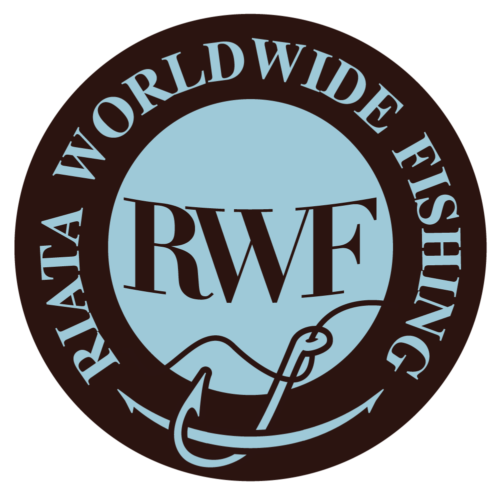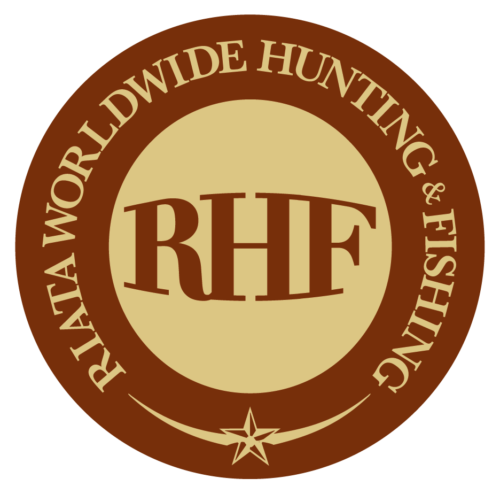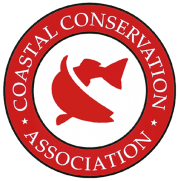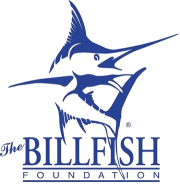BELIZE WORLD-CLASS REEF FLATS FISHING ON A PRIVATE ISLAND
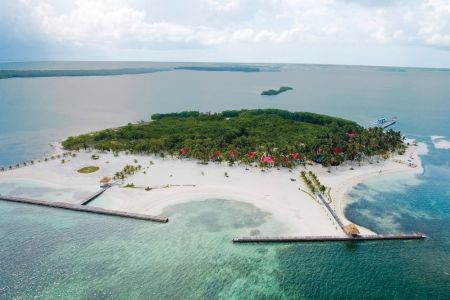
FISHING GUIDES
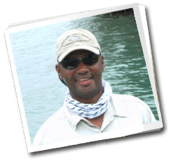
CLINTON “KP” WADE
KP stands for king permit, and a permit is a fish that every fly fisherman wishes to catch. KP is in his early 30s, full of energy and very keen. He loves fishing and is very excited about the guests actually landing the fish, once he puts them on them. He is ideal for a fly fisherman who has never fished in saltwater before. Very knowledgeable from north to south in the atoll, and knows many secret spots.

JOE “JOEY” FABER
Joe has been with the lodge for more than 20 years. He knows the area like the back of his hand. Joe has a very strong Caribbean “creole” accent, and it’s always fun to listen to him speak. Sit back, relax and let Joe take you on an adventure.
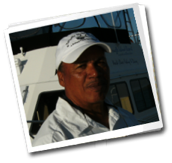
EDDIE “G” GABOUREL
Eddie is a guide who actually lives on the west side of the atoll. He knows all about the area, and the history too. He has been with the lodge for more than 10 years. He is an experienced fisherman and loves what he does. Eddie is very eloquent and would be a very good teacher. Let him amaze you.

FABIAN JOHNSON
Fabian has been with the lodge for 10 years and is extremely knowledgeable. He makes the very effective “pizza fly” that has helped Cody Kittleman attain his Grand Slam World Record. He is definitely a man of few words but has the eyes of a hawk and there are few spots on the atoll he doesn’t know about. Let him help you catch your grand slam.
RESORT INFO
Centuries ago, the earth’s crust shifted and caused the land mass off the coast of Belize to sink into the sea. When these three large mountain peaks sank, coral began to grow towards the surface of the water. In a process, which began thousands of years ago and continues today, new coral grew upon older coral and as a result, the three atolls in Belize were formed. These are three of only four which exist in the Caribbean.
Ours was to be the first offshore lodge of its kind in Belize. The resort still retains three of its original structures built in 1962.
Since acquiring the island in 2001, we have tried to elevate the comfort of guests without compromising the unique “Hemingway feel”. In an attempt to make it more ecologically and environmentally friendly we utilize solar power along with a water purification system, the only one of its kind in the Caribbean. The improvements have been made in order to give our guests the best service that we can provide without compromising the surrounding delicate ecosystem. We hope that these combined efforts enhance your stay with us.
LODGING
Our lodging consists of three options: deluxe, superior and a private villa.
CALL FOR EXACT RATES
HOW TO CALCULATE YOUR RATE
1. Choose a length of stay
We have two weekly arrival and departure dates: Saturday and Wednesday. If you are staying from Saturday to Saturday or Wednesday to Wednesday, you will be staying with us for 7 nights, Saturday to Wednesday for 4 nights, and Wednesday to Saturday for 3 nights.
2. Choose your room type
We have three room types, and each is priced differently. Choose our beach floor deluxe rooms, pick our top floor superior rooms with magical views, or indulge in our secluded private villas. The prices listed are per room for two people and include all meals and transfers.
3. Choose your activity
Diving, fishing or snorkeling? You can add it all on the island, but to guarantee availability you should add one of our activities. Our activities are priced per person and all of the packages of 4 nights or more include our famous Blue Hole excursion day (a $200 value). Add the price of each person’s activity to the room and board price to get your total. Don’t want to do an activity or just want to relax and read a book in a hammock? Not a problem, just skip this step.
4. Add tax
12.5% Belize occupancy tax
DINING


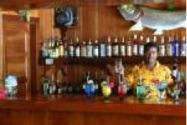
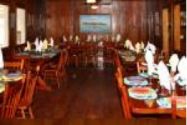

OUR FISHING
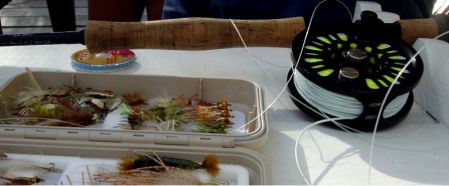
Fly fishing possibilities are endless around the atoll in Belize. While most of our guests come to fly fish for bonefish, which are abundant on the nearby flats, our guides can also introduce you to the permit, tarpon and a wide variety of other fish. Our flats boats can take you to numerous fishing sites on the flats and in the mangrove creeks and lagoons. We also offer spin casting and night fishing. Our tackle shop has rental equipment available and an assortment of flies and lures. The fishing schedule is from 8:00 am to 5:00 pm. You can return to the resort for lunch or you can take packed lunch with you in the morning. Please discuss your fishing requests with your fishing guide and the managers.
After forty years, this private island is still recognized as one of the top saltwater flats and fly fishing lodges/resorts in Belize, and in the Western Caribbean. With forty years of experience and the record holder for the grandest slams caught, this is your assurance that we have a quality fishing program, demonstrated by its high level of service with comfortable upscale accommodations.
Our commitment to excellence will reward you with the best saltwater fishing and fly fishing experience that no other resort can offer you in Belize. We hope you will join us and experience the quality for yourself.
Please remember – No fishing from the island at any time.
CATCH AND RELEASE
We are a catch and release-only lodge which offers you an exclusive fishing experience. With our secluded southern atoll location and a maximum of 8 anglers per week, our creeks and flats are packed with fish. Now, it’s your chance to set a world record with a grand slam. You too can catch a permit, tarpon, and bonefish in one day, and nail down your place in the record books!
TYPES OF FISH
Most of our guests seek bonefish, permit, and tarpon, which are plentiful within minutes of the lodge. Our guides can also introduce you to barracuda, numerous varieties of jacks, snapper and much more. Our dolphin super skiffs (50 horsepower, 4 stroke engines) provide maximum comfort, and speed you to various fishing sites around the atoll and open blue water. Our fishing program is built around our Flats Management Program, offering scheduled runs from 8:00 am to 5:00 pm daily.
BONEFISH
- Family: Albulidae, BONEFISH
Albula vulpes - Description: silvery color with bluish or greenish back – slender, round body; snout long, conical, aiming downward and overhanging lower jaw; dark streaks between scales on the upper half of body and faint crossbands extending down to lateral line; extremities of dorsal and caudal fins shaded with black.
- Similar fish: ladyfish, Elops saurus
- Where found: primarily inshore fish, inhabiting shallows of the Turneffe Island Resorts, Turneffe Atoll; found in shallows often less than 1 ft deep, usually over lush grass flats, occasionally over white sand.
- Size: 3 to 5 pounds.
- Remarks: travels in loose schools; roots out shrimp, shellfish, crabs, and fish from the bottom; spawn offshore, eggs hatching into ribbon-like larvae that metamorphose into fish-like form at about 2 inches and move inshore.
PERMIT
- Family Carangidae, JACKS and POMPANOS
Trachinotus falcatus - Description: color gray, dark or iridescent blue above, shading to silvery sides, in dark waters showing golden tints around breast; small permit have teeth on the tongue (none on pompano); no scutes; dorsal fin insertion directly above that of the anal fin; 17 to 21 soft anal rays.
- Similar Fish: pompano, T. carolinus. The permit is deeper bodied; dorsal body profile forms an angle at the insertion of second dorsal fin; pompano rarely grows larger than 6 pounds, permit common to 40 pounds.
- Where found: offshore on wrecks and debris, inshore on grass flats, sand flats, and in channels; with smaller specimens from every coastal county.
- Size: common to 25 pounds.
- Remarks: feeds mainly on bottom-dwelling crabs, shrimp, small clams, and small fish.
TARPON
- Family Elopidae, TARPONS
Megalops atlanticus - Description: last ray of dorsal fin extended into long filament; one dorsal fin; back dark blue to green or greenish black, shading into bright silver on the sides; may be brownish gold in estuarine waters; huge scales; mouth large and points upward.
- Similar Fish: (as juveniles) ladyfish, Elops saurus.
- Where found: primarily inshore fish, although adult fish spawn offshore, where the ribbon-like larval stage of the fish can be found.
- Size: most anglers catch 40 to 50 pounds.
- Remarks: slow grower; matures at 7 to 13 years of age; spawning occurs between May and September; female may lay more than 12 million eggs; can tolerate a wide range of salinity; juveniles commonly found in freshwater; can breathe air at the surface; feeds mainly on fish and large crustaceans.
COMMON SNOOK
- Family Centropomidae, SNOOKS
Centropomus undecimalis - Description: distinct lateral line; high, divided dorsal fin; sloping forehead; large mouth, protruding lower jaw; grows much larger than other snooks; pelvic fin yellow.
- Similar Fish: other centropomus.
- Where found: from central Florida south, usually inshore in coastal and brackish waters, along mangrove shorelines, seawalls, and bridges; also on reefs and pilings near shore.
- Size: most catches 5 to 8 pounds.
- Remarks: spawns primarily in summer; cannot tolerate water temperatures below 60 degrees F; can tolerate wholly fresh or saltwater; schools along shore and in passes during spawning season; feeds on fish and large crustaceans.
GREAT BARRACUDA
- Sphyraena barracuda
Family Sphyraenidae, BARRACUDAS - Description: gray, with a greenish cast above, whitish below; many irregular, small black blotches on the lower side; 18 to 22 diagonal dark bars on the upper side (not always evident); caudal fin dark with white tips; 75 to 87 lateral line scales; no fleshy tip on the jaw
- Young: dark stripe on the side; stripe breaks into dark squarish blotches as fish grows
- Size: to 2 meters (6 feet) and 48 kilograms (106 pounds); reports of larger fish unverified
- Where found: young live in inshore seagrass beds; adults range from inshore channels to open ocean
- Remarks: most attacks on people have occurred when they were wading or swimming in turbid water while wearing bright objects, attempting to spear a barracuda, or carrying speared fish; flesh of smaller fish apparently not poisonous, but larger fish sometimes very toxic due to ciguatera; no safe, reliable way of recognizing toxic fish
MUTTON SNAPPER
- Lutjanus analis
Family Lutjanidae, SNAPPERS - Description: color olive green on back and upper sides, all fins below the lateral line having reddish tinge; bright blue line below the eye, following the contour of operculum; anal fin pointed; a small black spot below dorsal fin; V-shaped tooth patch on
- Similar Fish: lane snapper, L. synagris (anal fin pointed in mutton snapper, rounded in lane).
- Where found: an inshore species associated with grass beds, mangroves, and canals; larger adults occasionally found on offshore reefs.
- Size: common to 15 pounds.
- Remarks: spawns in July and August; feeds on fish, crustaceans, and snails.
